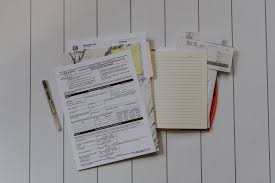
What Are the Social Security Disability GRIDS?
What Are the Social Security Disability GRIDS? Generally, Social Security defines disability as having the inability to work. Social Security considers your ability to go back to your past work. They also look at your ability to do other types of work. However, Social Security understands it may be harder for older individuals to learn new work. Therefore, Social Security has more favorable rules for people over age 50.
What are the GRIDS?
Social Security uses a medical-vocational chart known as the GRIDS when evaluating disability claims. The GRIDS consider different factors including your age, education and work background. They also consider your residual functional capacity or RFC. Social Security looks at the GRIDS chart to see if you qualify for disability even if you can do other types of work.
Social Security Disability GRIDS and your past work
When you apply for disability, you must provide your work history. Social Security asks you to explain the type of jobs you had going back 15 years. They ask you how long you did each job. They also ask how much you earned at your past jobs. Only work done in the past 15 years that resulted in significant earnings is considered relevant for your disability claim. The GRIDS won’t apply if Social Security thinks you can do any past work.
Social Security Disability GRIDS and your RFC
Social Security defines your RFC as what you can do despite your limitations. An RFC includes both mental and physical limitations. Social Security reviews your medical records to figure out your RFC. Therefore, it is extremely important that tell Social Security about all of your doctors. You should see your doctors regularly. Your doctors can help you case by completing an RFC form. They should include both physical and mental limitations caused by your medical conditions. They should also include any side effects from medications or pain levels. Your disability advocate can provide these forms for your doctor.
Social Security Disability GRIDS: categories of work
The GRIDS divide work into several different physical categories. The more physical your past work, the more likely the GRIDS will help you win your case. These categories include:
- Sedentary – sitting jobs that don’t require lifting more than 10 pounds
- Light – usually require more standing and walking and don’t require lifting more than 20 pounds
- Medium – requires lifting between 25-50 pounds
- Heavy – requires lifting more than 50 pounds
Social Security Disability GRIDS: transferable skills
In addition to physical limitations, Social Security also considers skills required to do your past work. They must figure out if you can use skills from your past work to do other types of jobs with little or no new training. Social Security considers these types of skills “transferable skills”. If your past work has transferable skills, it may be harder to apply the GRIDS. Any problems you have with memory, attention or concentration can help eliminate transferable skills. If Social Security finds that you can only perform simple or routine tasks, transferable skills don’t apply. Usually, to prove this limitation, you need mental health treatment.
Example 1: applying the GRIDS over 50
In one case, a 53 year old man applied for disability benefits after he broke his ankle. He required surgery and had pins and screws in his foot, developed arthritis in the ankle and ongoing pain. He required a cane, previously worked as a line cook and dishwasher. Social Security found that he could no longer perform his past work as a line cook or dishwasher. They also found he could only do sedentary jobs. Since his past work had no transferable skills, the GRIDS applied. Social Security approved his disability claim.
Example 2: applying the GRIDS over 50
In another case, a 50 year old woman applied for disability benefits because she had lumbar disc disease, osteoarthritis in her knees and depression. She previously worked as a medical receptionist and office clerk. Social Security found despite her impairments, she could still perform sedentary work. However, they also found she could only perform simple and routine tasks due to her depression. Since her job required more complex tasks, she was not able to return to her past work. Therefore, the GRIDS allowed Social Security to approve her claim.
Example 3: applying the GRIDS over 55
For example, a 58 year old man applied for disability after he had a heart attack. He needed heart surgery and had several stents placed. His doctor told him he could no longer lift more than 10 pounds due to the stents. Despite surgery, he also continued to have chest pain and shortness of breath. He previously worked as a dump truck driver. Social Security found that he could not perform his past work. However, they felt he could do light work. Since he was 58 years old and could no longer perform his past work, the GRIDS applied. He was awarded disability benefits.
Example 4: applying the GRIDS over 55
In another example, a 60 year old woman filed for disability due to diabetes, diabetic neuropathy, asthma and anxiety. She previously worked as an auditor and housekeeper. Social Security found that she could not return to her past work as an auditor because she could only perform simple tasks. They found she could not return to her past work as a housekeeper because she could not stand or walk for long periods. They applied the GRIDS and found her disabled.
Call Now for a Free Case Review, 800-700-0652
Make sure you start your SSDI and VA disability claim the right way and apply for all the benefits you deserve. Contact us now for a free consultation.
Related Articles
- Is Osteoporosis a Disability?
- What is the Difference Between SSI and SSDI?
- I Just Received a Function Report Questionnaire from Social Security. What Should I Do?
- Why Your SSD Claim Might Be Denied?
- What is the SSDI Payment Schedule?
- How can I Check on My Disability Claim?
- Why Should I Hire a Disability Lawyer?
- What are the Over 55 Grid Rules?
- VA Benefits Appeal
- VA Disability Remand
- What are Social Security Disability Questions?


